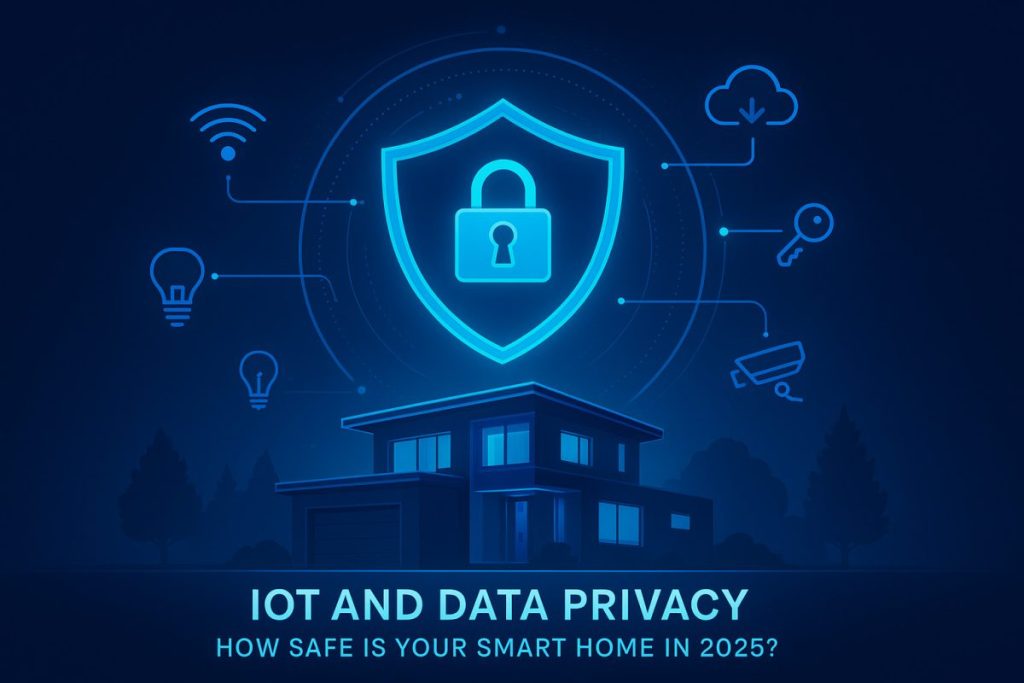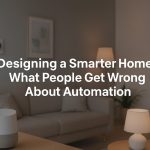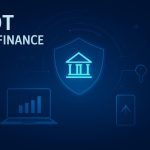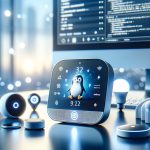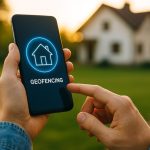The smart home revolution has made everyday life more convenient than ever. From voice assistants that control the lights to security cameras that send alerts directly to your phone, connected devices have become part of our daily routines. But with this convenience comes an important question: how safe is your personal data in a world where everything is online?
What Data Do Smart Devices Collect?
Most people don’t realize just how much information their devices handle. A smart plug may track your energy usage patterns, a thermostat learns when you’re home, and a voice assistant records commands that can reveal personal habits. When this data is combined, it creates a detailed digital portrait of your life.
The Most Common Vulnerabilities
Even the smartest home can be exposed to risks if basic security is overlooked. The biggest weak points include:
- Weak passwords – still the easiest way for hackers to break in.
- Outdated firmware – unpatched software creates backdoors for attackers.
- Cloud storage risks – data that’s sent to external servers may not always be encrypted.
- Overlapping devices – the more connected gadgets you add, the larger the attack surface becomes.
Real-World Examples of IoT Breaches
IoT security incidents are no longer rare. From hacked baby monitors to compromised security cameras, there have been cases where devices intended to keep families safe actually opened the door to intruders. These examples serve as reminders that privacy is not automatic—it must be protected.
How to Protect Your Smart Home
The good news is that there are practical steps every homeowner can take:
- Change default passwords immediately and use strong, unique ones.
- Enable two-factor authentication where possible.
- Update device software regularly to close known vulnerabilities.
- Use a separate Wi-Fi network for IoT devices to reduce exposure.
- Review permissions so devices only collect what’s truly necessary.
Looking Ahead: IoT Security in 2025
Manufacturers are becoming more aware of consumer privacy concerns. Many new devices come with built-in encryption, automatic updates, and better transparency about data usage. At the same time, regulations around data protection are tightening, pushing companies to treat privacy as a priority rather than an afterthought.
Final Thoughts
A smart home should make life easier, not riskier. By understanding the privacy challenges and taking a few proactive steps, you can enjoy the benefits of connected living without losing control of your personal data. In 2025 and beyond, awareness and smart habits are the keys to keeping your digital home safe.
- IoT for Beginners: The Complete Smart Home Starter Guide (2025 Edition)
 Smart home devices are no longer sci‑fi toys for tech geeks – they are affordable, easy to install, and can genuinely make everyday life more convenient, efficient, and secure. This guide walks you through the essentials of getting started with IoT and building a smart home in 2025 without getting overwhelmed by buzzwords and acronyms.…
Smart home devices are no longer sci‑fi toys for tech geeks – they are affordable, easy to install, and can genuinely make everyday life more convenient, efficient, and secure. This guide walks you through the essentials of getting started with IoT and building a smart home in 2025 without getting overwhelmed by buzzwords and acronyms.… - Designing a Smarter Home in 2026: What People Get Wrong About Automation
 Smart homes were once science fiction, but today they’re a reality in millions of households. With voice assistants, smart plugs, and automated lighting systems, it’s easy to assume home automation is simply a matter of plugging in a few devices. Yet, many homeowners quickly discover that “smart” doesn’t always mean simple. In this article, we’ll…
Smart homes were once science fiction, but today they’re a reality in millions of households. With voice assistants, smart plugs, and automated lighting systems, it’s easy to assume home automation is simply a matter of plugging in a few devices. Yet, many homeowners quickly discover that “smart” doesn’t always mean simple. In this article, we’ll… - Automated Online Trading: How IoT is Redefining Financial Markets
 Introduction automated online trading In a world where milliseconds can decide millions, the fusion of Internet of Things (IoT) technology and automated online trading is reshaping global finance. What once relied solely on human judgment now increasingly depends on connected machines, real-time data, and predictive algorithms. From weather sensors influencing agricultural trades to smart logistics…
Introduction automated online trading In a world where milliseconds can decide millions, the fusion of Internet of Things (IoT) technology and automated online trading is reshaping global finance. What once relied solely on human judgment now increasingly depends on connected machines, real-time data, and predictive algorithms. From weather sensors influencing agricultural trades to smart logistics… - The Role of Linux in IoT: Powering the Connected World
 The Internet of Things (IoT) is everywhere—from smart homes and wearable devices to industrial automation and self-driving cars. Behind the scenes, one operating system plays a surprisingly dominant role: Linux. Known for its stability, flexibility, and open-source nature, Linux has become the backbone of countless IoT devices and platforms. But what makes Linux so well-suited…
The Internet of Things (IoT) is everywhere—from smart homes and wearable devices to industrial automation and self-driving cars. Behind the scenes, one operating system plays a surprisingly dominant role: Linux. Known for its stability, flexibility, and open-source nature, Linux has become the backbone of countless IoT devices and platforms. But what makes Linux so well-suited… - The Smart Home Revolution in 2025: How IoT is Transforming Everyday Living
 In the past decade, the vision of a truly smart home has moved from futuristic fantasy to everyday reality. As we step into 2025, the Internet of Things (IoT) has matured into a robust ecosystem, connecting appliances, security systems, lighting, and even entertainment devices under one seamless digital roof. The result? Homes that are safer,…
In the past decade, the vision of a truly smart home has moved from futuristic fantasy to everyday reality. As we step into 2025, the Internet of Things (IoT) has matured into a robust ecosystem, connecting appliances, security systems, lighting, and even entertainment devices under one seamless digital roof. The result? Homes that are safer,…
